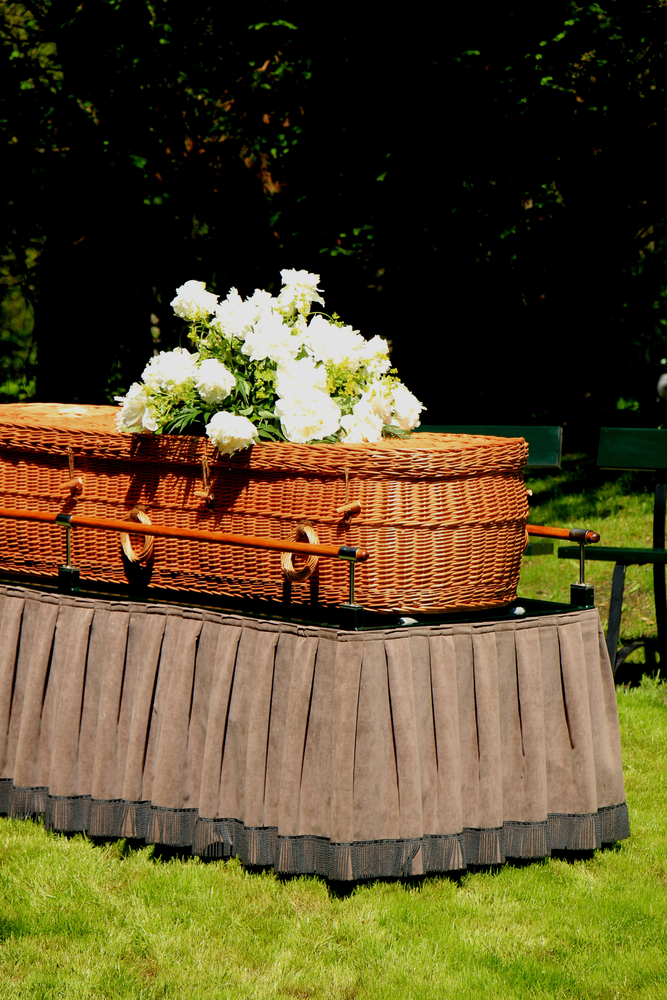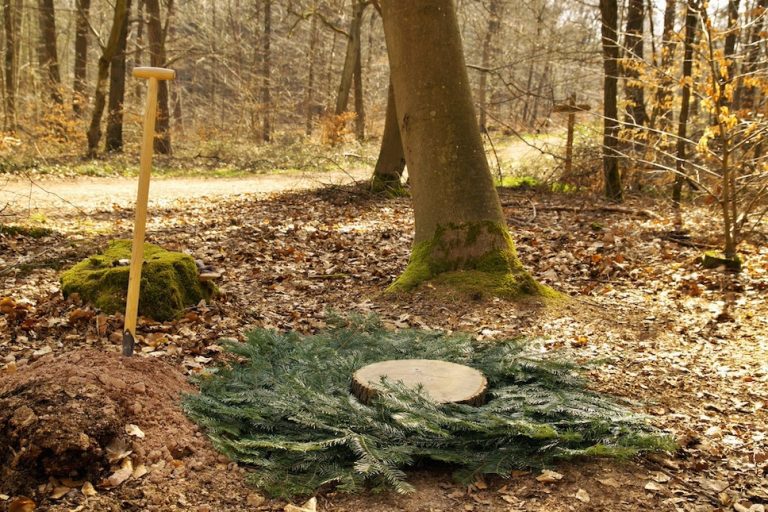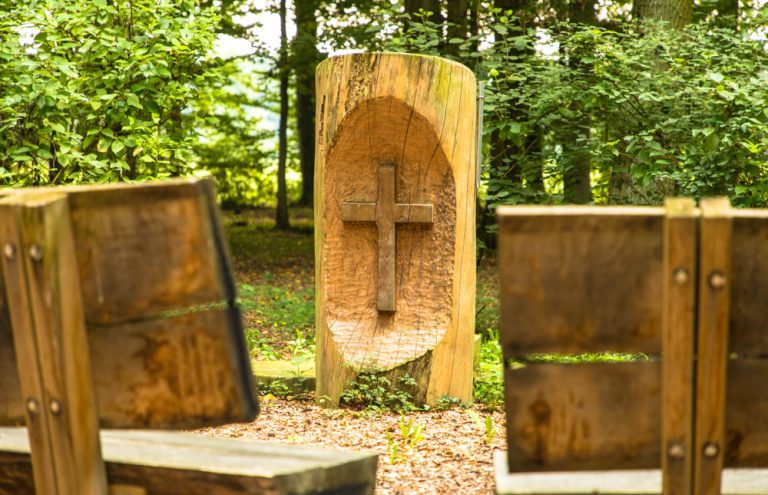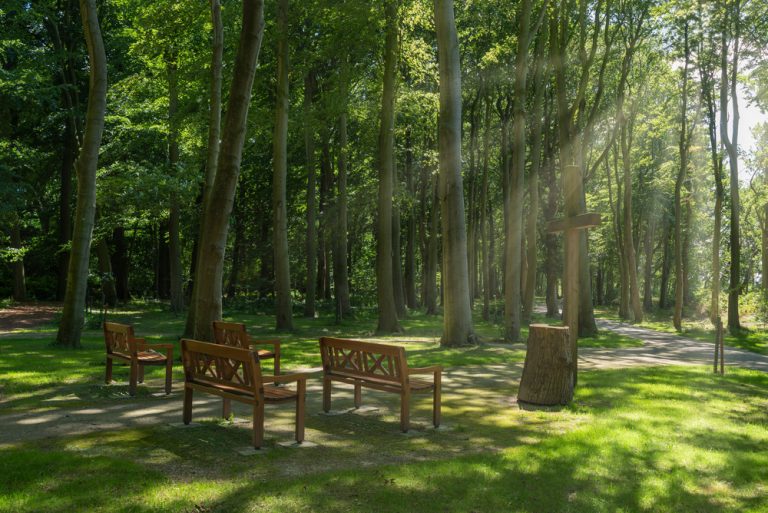Natural Burial
What is a Natural Burial?
In this article, we’ll explore the world of natural burials in depth. We’ll answer some of the most common questions, compare their cost with traditional burials and cremations, and highlight the environmental benefits. We’ll also discuss what to expect at a natural burial, suitable materials that can be used, and which countries allow this form of burial. These beautiful funerals offer a heartfelt way to bid farewell to a loved one while honoring the Earth, so let’s discover whether they might be the alternative you’re looking for.
Understanding natural burials
A natural burial, often referred to as a green burial, is a harmonious and eco-conscious approach to the end-of-life journey. It embraces the principles of simplicity, sustainability, and a return to nature. At a natural burial, you can anticipate a serene and earth-friendly ceremony. Here’s what typically occurs.
- Location: Natural burials take place in dedicated green or woodland preserves, or sections of traditional cemeteries specifically reserved for this type of funeral and designed in such a way as to minimize environmental impact. These spaces are often lush with native flora and fauna.
- No embalming: Natural burials avoid embalming fluids, which can contain toxic chemicals. Instead, the body is preserved naturally until the burial, which usually occurs within a few days of death.
- Casket or shroud: The deceased is placed in a biodegradable casket made of materials like wicker, plain wood without varnish, or even a simple burial shroud. These materials break down naturally and do not harm the environment.
- Shallower grave: The body is buried at a shallower depth, in the more active layers of the soil to assist with decomposition, and to make sure that the body is available to nourish plant roots and soil organisms.
- Memorial trees or native plants: Many natural burial sites allow families to plant native trees or flowers as a living tribute to the deceased. This practise contributes to the restoration of natural habitats.
- No headstone: Usually no headstones or synthetic memorials can be installed at the burial site. Grave sites can instead be located via GPS-coordinates on a site map. Families may be given wooden markers to place at the site that will become less visible as the native vegetation regenerates.

Is there a difference between green burials and natural burials?
While the terms “green burial” and “natural burial” are often used interchangeably, there can be subtle distinctions. Natural burials are more likely to occur in specially allocated sections of traditional cemeteries, as opposed to designated green burial sites. Natural burials may also allow for cremation, with ashes being placed in a biodegrable urn, handmade from natural materials such as silk, leather or handmade paper, prior to being buried.
Materials for natural burials
This type of funeral is characterized by the use of biodegradable, sustainably grown materials to make caskets or shrouds, and the lack of any lead, metal, or plastic fittings. Varnishes, oil-based paints, or toxic glues are also not permitted. Any lining or filling in the casket should also be biodegradable. The clothing of the deceased should be made of natural fibers, and non-biodegradable jewelry is discouraged.
Common materials used for caskets are:
- Wicker: Crafted from a renewable material like willow, a wicker casket is a very attractive option.
- Cardboard: Lightweight and eco-friendly, a cardboard casket is a great alternative for those seeking simplicity.
- Plain wood: If a timber casket is your preference, one made from untreated wood, sustainably sourced, with no varnish, is a good choice.
Burial shrouds are traditionally made from cotton, wool, linen, or bamboo.
Environmental benefits
Natural burials offer several environmental benefits when compared to traditional burials and cremations.
- Reduced carbon footprint. Traditional burials require the production of caskets, embalming fluids and concrete vaults, all of which contribute to carbon emissions. In contrast, natural burials minimize these environmental impacts.
- Preservation of green space. Traditional cemeteries often consume vast tracts of land, leading to deforestation and habitat destruction. Natural burial sites are designed to conserve green space, and encourage native flora and fauna.
- No embalming chemicals. Natural burials avoid the use of embalming fluids, which can contain harmful chemicals such as formaldehyde. Studies of workers exposed to high levels of formaldehyde, such as embalmers, have found that it can cause leukaemia and rare cancers. Not using embalming fluids also prevents soil and groundwater contamination from occurring.
- Restoration of ecosystems. Many natural burial grounds engage in habitat restoration efforts, such as planting native trees and flowers. This not only honors the deceased, but also contributes to the rejuvenation of the local environment.


How much does a natural burial cost?
While costs vary from one country to another, and one provider to another, natural burials typically cost much less than a traditional burial. And while traditional cremation tends to cost less than traditional burial, it is still likely to be slightly more expensive than a green burial.
Which religions accept natural burials?
The funeral rites of many religions are in keeping with the principles of natural burials. The Jewish faith, for example, prohibits the use of embalming chemicals, and requires the deceased to be wrapped in a shroud and placed in a plain wooden coffin, often with holes in the bottom, to help speed up the process of decomposition. The aim is for the body to return to the earth as quickly as possible.
Islamic law requires that the deceased be washed and buried within 24 hours of death. Again, no embalming fluid is used, nor is there any coffin, casket or burial vault. The body is wrapped only in white cloth.
Christian faiths are increasingly supportive of natural burials due to the environmental benefits. And while Buddhists most commonly choose to be cremated (the Buddha himself was cremated), natural burial is also becoming more popular now — again, for environmental reasons.
Where are natural burials legal?
Natural burials have gained recognition in numerous countries and are legally permitted in the United States, Canada, the United Kingdom, Australia and New Zealand. France opened its first eco-cemetery in Paris in 2019.
In the United States and Canada, the Green Burial Council (GBC) is a non-profit organization that provides certification for funeral homes and cemeteries offering natural burial services. They maintain a directory of providers on their website, making it easier for individuals and families to locate natural burial options in their area.
The U.K. has been at the forefront of natural burials, with the Association of Natural Burial Grounds (ANBG) being established by The Natural Death Centre charity in 1994. The Association requires members to comply with its Code of Conduct, ensuring quality control for people wishing to have a natural burial for their loved one. It also provides a list of natural burial grounds.
In Australia, the website Gathered Here includes a useful list of natural burial grounds.
In New Zealand, the not-for-profit organization Natural Burials certifies and promotes natural cemeteries, caskets and funeral directors.
Conclusion
Natural burials, or green burials, beckon us to embrace simplicity, sustainability, and a profound connection to the Earth. They provide an opportunity to honor our loved ones, while leaving a gentle ecological footprint. As you contemplate your own end-of-life wishes or those of a cherished family member, consider the tranquility and environmental stewardship that natural burials offer. Together, let’s celebrate life and nature — even in our final moments — leaving behind a legacy of love and care for our beautiful planet.

